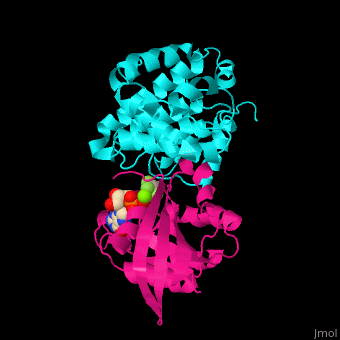Function
Rho GTPase or Rho-related GTP-binding protein of higher vertebrates include RhoA, RhoB, RhoC, RhoD and RhoE. These proteins share 85% sequence identity. RhoA is the more extensively studied among these three. RhoA regulates a signal transduction phosphorylation pathway linking plasma membrane receptors to the assembly of focal adhesions and actin stress fibers. Rho GTPase operates as a switch cycling between the active GTP-bound form and the inactive GDP-bound one. A number of proteins have been identified as targets of RhoA[1].
- RhoB has a role in actin organisation, membrane trafficking, cell proliferation, DNA repair and apoptosis[2].
- RhoD participates in regulating cell-cycle progression and centrosome duplication[3].
- RhoE induces loss of stress fibres and inhibits cell cycle progression[4].
- RhoG regulates actin-cytoskeleton dynamics, survival and proliferation in immune cells[5].
- Mitochondrial Rho GTPase (Miro) have tandem GTP-binding domains separated by a linker region containing calcium-binding EF hand motifs indicating a role in mitochondrial homeostasis and apoptosis[6].
- Miro2 regulates inter-mitochondrial communication along microtubules[7].
Disease
Mutations in RhoA were identified in diffuse gastric cancer[8].
Relevance
RhoA is thought to be important in mediating vasoconstriction in the penis[9].
Structural highlights
The [10]. Water molecules are shown as red spheres.
3D structures of Rho GTPase
Rho GTPase 3D structures

